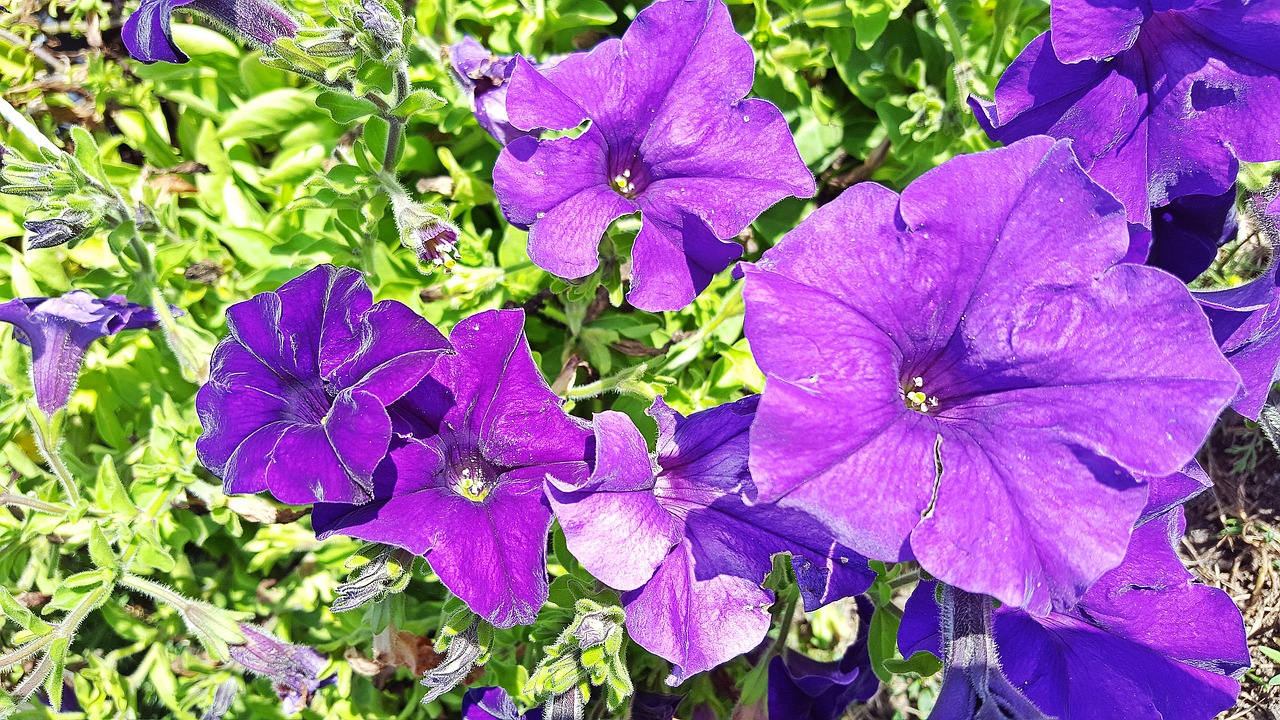Gardeners must know how to revive dying petunias by watering and cutting. It can be discouraging to see your flowers dying, but you can rejuvenate them back to health with proper techniques. You can also use a greenhouse to ensure that your plants live in an optimal environment and keep your colorful flowers thriving.
Petunias are annual plants, but if you’re planting zones 10 to 11, it’s better to grow them as perennials. However, this makes them prone to becoming leggy in the middle of the summer. What’s great with these plants is that proper maintenance and care should bring them back to their glorious condition.

Two Best Ways On How To Revive Dying Petunias
#1. Watering
The first practice that can help revive dying petunias is as simple as watering. Sometimes, your plants don’t require cutting back, and watering should be enough to support the flowers to return to good health. But how would you know that watering is enough for dying petunias?
Typically, petunias with wilted and floppy flowers and leaves are just dehydrated and will benefit from watering. Add moisture to your soil so that the roots absorb the water quickly. If done right, your petunias should look better within hours.
However, while this is a quick and straightforward solution, it’s more ideal if your plants do not experience wilting often. Petunias that wilt frequently will eventually get damaged because of the stress. Therefore, make it a habit to saturate the soil to the root level twice a week.
If you are growing on containers, watering can be every day. Check when there are signs of wilting or if the soil looks dry. If you notice that the ground gets very dry and they pull away from the sides, submerge the pot in water until bubbles cease.
#2. Cutting
Your second option for reviving dying petunias is cutting. This practice would be more suitable if your plants have passed the stage where watering isn’t enough to restore them. What signs should you look for in your petunias that signals cutting is appropriate?
Check the foliage of your plants and if they look dry and crunchy instead of wilting. Watering won’t be appropriate at this stage, but cutting or trimming the vegetation should do the trick. Depending on how much foliage has dried, you can trim your plants back at one to two inches of the base.
After trimming, don’t forget to water the soil to help the plants further. You should expect new growth and blossoms after weeks as long as you water them well. Emphasis is necessary with watering because even after cutting, plants would not bloom and might die within days if they are dehydrated.
Cutting back the foliage when you notice brittle and yellow or brown leaves can help revive them. This practice is more common halfway through the summer, and shearing them back should help get a healthier new growth. Pinching off dead blooms or stems as soon as they wilt could also encourage flowering and force the plant to produce a fuller growth.
How To Prevent Petunias From Dying
As you can take from the previous information, watering plays a significant role in petunias’ health. It’s the common reason why the plant’s wilt, and even after cutting, plants will cease to recover if you failed to water them afterward. Therefore, adequate water is the primary practice to help prevent petunias from dying.
Like with other plants, you should also maintain the ideal conditions of petunias to keep them healthy. The greenhouse makes an excellent environment for all flowers alike because you control the temperature, light, and pests much more comfortably. You can also monitor your petunias quickly compared to growing them outdoors.
The greenhouse can protect your petunias, especially during summer, where the heat can get intense. You can use watering systems to ensure that all your plants receive their water requirements in addition to having a cooling system if necessary. Overall, prevention and quick intervention should prevent petunias from dying.
Do not forget to water petunias with an inch of water weekly and apply fertilizer at midseason. Mulching should also help in keeping the soil cool and hydrated to prevent heat stress. Lastly, you might need to use a greenhouse shade if the sun gets too harsh for the plants.
Conclusion
Growing petunias in the greenhouse should ensure that your plants stay healthy and glorious-looking. But do you know how to revive dying petunias when you saw the signs? Don’t panic because watering and cutting petunias should rejuvenate your flowers back to life.
Watering should be your first step and immediate response when you notice your foliage wilting. Petunias should bounce back after watering, and diligence should quickly help you prevent dehydration and wilting. Lack of water is the most common cause of dying petunias, so water the plants responsibly.
Otherwise, dried leaves and brittle foliage means that cutting back petunias are the more appropriate response. After you trim the plants, remember to water the soil to support the new growth. Using a greenhouse should also help you maintain the plants, regardless of the weather.
Adjust the conditions indoors and always monitor your petunias for signs of wilting or drying.
